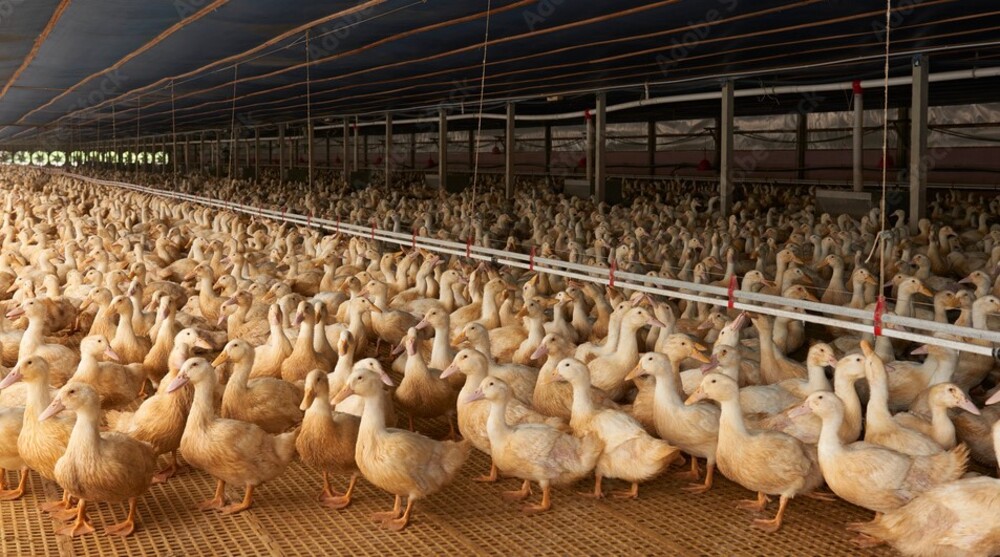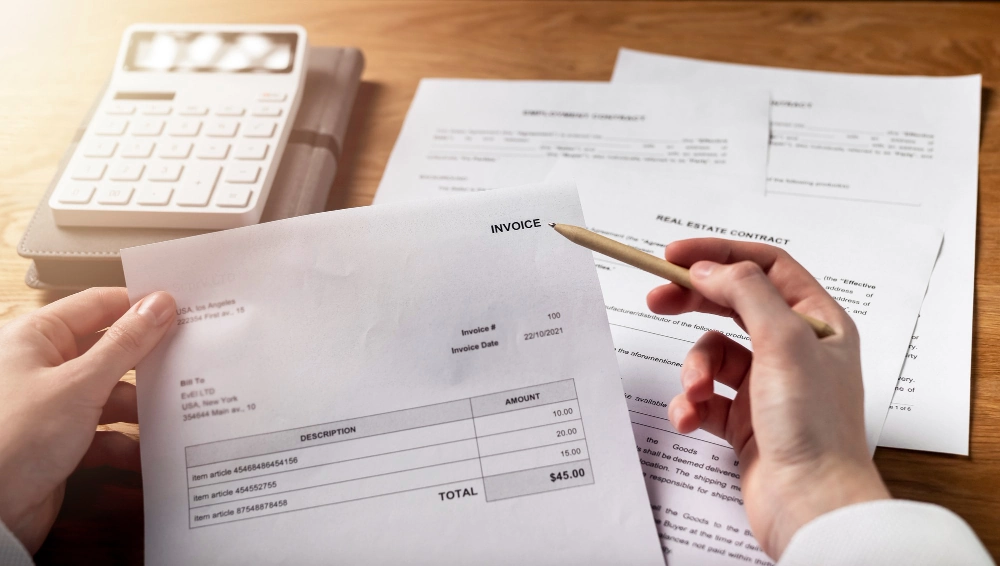Duck farming is one of the livestock businesses that still exist today. Not only exists, this agribusiness also has promising business prospects.
Moreover, if you live in a rural area, where the natural conditions are still very supportive to run a livestock business such as duck farming and have the opportunity to become a supplier of basic needs for the wider community.
Well, for those of you who are serious about pursuing this business, the following explanation will really help you.
Great Opportunity for Duck Farming
Duck farming is divided into two types. These include laying ducks and broiler ducks. As the name implies, laying ducks are a type of duck farming business that makes duck eggs the main selling commodity.
Besides being able to be used for egg cultivation, ducks can also be used as processed meat. Processed duck meat is still a favorite dish for Indonesian people. Duck meat has a distinctive taste and is different from chicken meat.
Duck meat has a more tender taste and the selling price of processed meat is more expensive than chicken. Therefore, the business opportunity for broiler ducks is very promising and can be done even by novice businessmen.
Not only processed meat, ducks used as broiler ducks can also be used for craft materials (feathers) and catfish feed (duck droppings)
As previously mentioned, duck farming is a promising type of business. Here are some strong reasons why this one business is worth pursuing.
- Duck consumption is quite stable and much sought after by the public
- Duck is known to have a delicious and delicious taste
- Duck business can be started from a home scale
- Minimal capital and relatively easy maintenance
- The harvest can be distributed anywhere, such as duck suppliers, and restaurants, to selling them online
Duck Livestock Risk
Every business has its own risks. Likewise with duck farming where the most common risks include the following two things.
1. Vulnerable to Disease
Ducks are birds that are more susceptible to disease attacks than other birds such as chickens and quail.
Diseases that can attack this duck farming business include changes in feathers to become duller, weak, blue-eyed, weight loss, and others.
To prevent this, it is highly recommended to give routine vaccines to all livestock ducks, choose the right feed, and keep the cage clean.
Because if only a few ducks are exposed to the disease, it will be easy to infect other ducks because they live in one colony.
If you don't have the courage to raise ducks in large quantities, start raising ducks with 30-50 tails.
Then, if you already know the concept of raising ducks correctly, you can increase the number of ducks to be raised.
2. High Feed Prices
Duck feed that comes from processed factories does have better quality. However, this can be a challenge if the price of duck feed coming from the factory increases.
Some of the duck feed also comes from imports, where the selling price will of course adjust to the movement of the dollar against the rupiah. If the price of feed increases, of course, it will disrupt the course of the livestock production process.
The solution to this risk is to make duck feed from its own processed products. The processed products can be in the form of tempeh and tofu dregs, rice bran, dry rice, tapioca flour waste, snail flour, bean sprouts waste, or winged bean seeds. Ensure that the nutritional needs of livestock ducks are still met, even though the selling price of feed and its processed products tends to fluctuate.
Tips for Successful Laying and Meat Duck Cultivation
Interested in starting a duck farming business? Check out the following success tips so that your business can run well.
You can also adjust the existing tips according to the type of duck business you want to pursue.

Image Source: Freepik/jcomp
How to Cultivate Laying Ducks
To produce super-quality duck eggs and avoid crop failure, it is important for you to pay attention to the following crucial things.
1. Prepare the Duck Cage
The condition of the livestock environment, especially the duck cage, is the main factor determining the quality of the eggs you will get.
Prepare an age-appropriate duck coop, adjust the room temperature as well as possible, and make sure there is sufficient lighting so that the ducks are not easily stressed and the cage is easy to clean.
The size of the cage made can be adjusted to the age of the ducks. Starting from the grower phase, the browser phase, and the layer phase. For the material used, laying duck cages generally use a box cage which is measured according to the density of the number of ducks present.
For example, if you have 100 laying ducks, the duck cage you can prepare is 2 meters x 2 meters.
2. Use Quality Duck Seeds
Next is related to the selection of duck seeds. The selection of these seeds must be considered carefully, especially their physical and health conditions.
Choose quality duck seeds from trusted suppliers. One supplier of laying duck seeds that are quite well known for their good quality is the ducks from Mojosari.
3. Selective in Feeding and Supplements
The composition of feed and supplements must be adjusted to the age and needs of the livestock. This is because the food intake given will affect the quality of the eggs when harvest time arrives.
4. Keep the Cage Always Clean
The last important tip is the importance of keeping the duck cage clean. Good sanitation will always keep the existing ducks healthy and productive to produce good eggs.
It's a different case if you are quite negligent in the matter of cleanliness. The existing ducks will be susceptible to disease and in a matter of days, other ducks in the same cage will also be exposed to the same disease.
If left unchecked, your duck farming business will experience crop failure due to all the ducks dying.
Therefore, as a preventive measure, while producing quality duck eggs, it is important for you to maintain the cleanliness of the laying duck cage by routinely cleaning it every day, washing the feed and drinking containers for the ducks, and spraying disinfectant in the cage so that it is free from viruses and germs.
How to Cultivate Broiler Ducks
As for how to cultivate broiler ducks you can apply as follows.
1. Making an Appropriate Cattle Cage
The first step in cultivating the broiler business is to make a proper livestock cage so that the ducks are protected from stress and attacks of various diseases.
Build a professional duck cage, made from materials that meet standards, and are durable. Generally, duck cages are made of materials such as bamboo, wood, and iron. The following are the criteria for a proper duck cage:
Requirements for a Good Duck Duck Cage
1. Setting the temperature of the cage that is not too high or low. The optimal temperature for broiler duck cages is approximately 39 degrees Celsius.
2. Humidity of broiler cages ranges from 60% to 65%.
3. Good lighting to facilitate supervision, regulation, and security.
4. The cage design is easy to clean. This is done so that the ducks are kept clean and protected from various diseases.
5. Smooth air circulation so that ducks avoid stress and are more comfortable.
6. Adequate exposure to direct sunlight.
7. Complete facilities such as places to eat, drink, and sanitation to keep the cage sterile.
Types of Broiler Duck Cages
-
Caged or Postal Cage
Postal cages are closed cages that have a floor mat made of compacted soil and covered with husks/sawdust mixed with lime powder. The layer is made so that the ducks are protected from disease germs.
Not only does a closed roof, but the postal cage type also has a closed wall. However, of course, not 100% of the wall is covered. There is ventilation that is useful to facilitate air circulation so that the air temperature and humidity in the cage are maintained properly.
The postal cage can be filled with 4 to 5 adult ducks per square meter. The advantages of this postal cage are that it requires easier maintenance, and hygiene, and is easy to monitor. Meanwhile, the drawback of this postal cage is that it is quite expensive to manufacture.
-
Colony Cage
Colony cages are cages that can accommodate ducks en masse and do not have a roof. Usually, livestock ducks that use colony cages also release ducks so they don't stress too long in the cage. The colony cage system is widely used by breeders who treat ducks with conventional methods.
The main characteristic of the colony cage is a floor made of compacted soil or cement and on top of it rice husks, husks, sawdust, and similar materials are given. In addition, usually in the colony's cage, an artificial pond is made for the ducks to swim.
The advantage of this cage is that it is cheaper to manufacture because it does not require complex equipment. Meanwhile, the disadvantages of colony cages are that they are more difficult to maintain, including how to clean them and the ducks must be released for a while to avoid stress in the cage.
2. Choose a Quality Duck Type
After knowing how to make a duck cage properly, it's time for you to know the types of duck breeds or ducks that are often used as broiler ducks. Here are some of them:
-
Peking Duck
This type of duck is the most widely used type of duck for broiler duck farming. The reason is that when they are adults, the body weight of Peking ducks can reach 4.5 kg - 5 kg per tail. With a greater weight compared to other types of broiler ducks, of course, the benefits are greater.
-
Branti Duck
Duck branti is a type of broiler duck that is the result of a cross between a female duck with an alibio local duck. People like this branti duck meat because it has a delicious and distinctive taste. If it is an adult, the weight of the branti duck can reach 2.5 kg to 3 kg per head.
-
Muscovy Duck
Muscovy duck is also known as duck or manila duck. The weight of a duck when it is an adult can reach 3 kg to 3.5 kg per head. In addition to having a fairly high weight, the Muscovy Duck also has good brooding power, so it can be easily bred.
3. Choosing the Right DoD (Day Old Duck)
DoD (Day Old Duck) is the age of broiler ducks when they just hatched or simply DoD is broiler duck breeds. The selection of DoD or duck breeds will determine the success of your broiler farming business. You must be able to have superior duck seeds. The characteristics of superior duck seeds are:
- male sex
- 2-7 days old
- The minimum weight is 40 grams per head
4. Feeding Quality Duck Ducks
To obtain quality broiler ducks, it is necessary to provide quality feed. This feeding is adjusted to the age of the existing ducks.
For example, when the ducks are 1-14 days old, the feed given should be mixed with water and the frequency of feeding can be done 5X a day.
Keep in mind, the first two weeks of duck age are the best growth period, and need to be given 511 concentrate feed of 100%.
Next, when the ducks are 15-20 days old, the feed you can use is a textured grower mixed with a little water and given 3 times a day.
As for ducks at harvest age, you can give them homemade mixed feed such as bran, feather meal, fish meal, and corn meal, or add organic vegetables to make the duck meat quality.
Another maintenance related to feeding is to make sure the drinking water around the duck cage remains filled and give stress medication when the ducks enter 20 days of age.
5. Monitor the Health of Broiler Ducks
One of the things you should not miss from the duck farming business is ensuring the health of broiler ducks. Make sure the ducks you have are free from disease.
Some diseases that often attack broiler ducks include paralysis, defecation, and loss of appetite.
These diseases can be prevented by diligently cleaning the duck cage, providing the appropriate vaccines and vitamins, and setting the right temperature for the cage.
6. It's Harvest Time
Broiler ducks can be harvested when they are 35 days old. When harvest time comes, try to sort the existing ducks. Separate the duck with the best, medium, and ordinary quality. After that, clean the cage to be used for the next period of ducks.
7. Sales
Male cut ducks with female ducks have different price variants. Therefore, male slaughtered ducks can be harvested faster.
As a tip, try to sell ducks at a relatively young age. The reason is, ducks that are still young have a more potent taste of meat, taste more savory, and of course, have high nutritional value.
Estimated Business Capital
Curious about the estimated capital and profit that you can potentially get from the duck farming business? Check out the full calculation below.
Laying Duck Business Capital Estimate
Starting laying ducks can be done in two ways. The first is to buy ducks that are ready to lay eggs with a vulnerable age of 5-6 months. Second, you can buy duck seeds that are not ready to lay eggs.
If you choose the second method, of course, it will take you more time for the existing ducks to lay eggs. On the other hand, if you choose the first method, it will not take long to produce eggs that will be marketed.
The following is an estimate of working capital and a brief analysis of the duck farming business that uses ready-to-lay duck seeds.
| No | Item | Quantity | Price Per Quantity | Total |
| 1. | Duck Seeds Ready to Egg | 100 Tails | Rp55.000 - Rp60.000 | Rp6.000.000 |
| 2. | Duck Cage | 1 | Rp1.200.000 | Rp1.200.000 |
| 3. | Feed, Vaccines, and Duck Care Costs | Per month | Rp1.700.000 | Rp1.700.000 |
| 4. | Cage Maintenance and Other Monthly Operating Expenses | Per month | Rp1.000.000 | Rp1.000.000 |
| Total | Rp9.900.000 | |||
Next, let's calculate the estimated income earned for one year if one duck can produce at least 200 - 250 eggs per year.
That means the 100 ducks you have multiplied by the number of eggs that can be produced, means 100 X 250 = 25 thousand eggs.
- Laying ducks are generally able to produce eggs up to the age of 2 years in a row. So the calculation is 24 months minus the age of duck seeds that are ready to lay eggs. 24 - 6 months = 18 months (1.5 years for cultivation).
- Then 1.5 years x 25 thousand eggs that are likely to be produced = 37.5 thousand eggs
- If the price of one egg is IDR 2,500, then the estimated annual income of 37.5 thousand eggs produced is IDR 93,750,000.
- And ducks that are no longer productive or no longer produce eggs (rejected) can be resold at a price of IDR 60,000, so 100 X IDR 60,000 = IDR 6 million
The total estimated income that you can get from the laying duck business is IDR 99,750,000, this figure does not include the calculation of net profit.
To calculate the net profit that you can get, you can calculate it in the following way.
- Cost of Feed, Vaccines, and Duck Care for 1.5 Years IDR 1,700,000 X 18 Months = IDR 30,600,000
- Cage Maintenance and Other Monthly Operational Costs for 1.5 Years IDR 1,000,000 X 18 Months = IDR 18,000,000
- Total Capital and Other Costs IDR 6,000,000 + IDR 1,200,000 + IDR 30,600,000 + IDR 18,000,000 = IDR 55.800.000
- One-time maintenance profit (1.5 years) IDR 93,750,000 - IDR 55.800.000 = IDR 37,950,000
From the calculations above, it can be concluded that the estimated net profit or profit you make from the duck farming business for one maintenance is IDR 37,950,000.
Estimated Working Capital of Broiler Duck
As explained above, broiler duck farming has less complex maintenance than laying ducks. This affects the amount of initial capital needed to start this duck broiler business. Here's the estimate:
| No. | Item | Quantity | Price Per Quantity | Total |
| 1. | Broiler Duck/Peking Duck | 200 | Rp12.000 | Rp2.400.000 |
| 2. | Cage Making Cost | 1 | Rp2.000.000 | Rp2.000.000 |
| 3. | Feed price per month | 1 | Rp600.000 | Rp600.000 |
| 4. | Duck Vitamins | 1 | Rp400.000 | Rp400.000 |
| 5. | Maintenance and other costs | 1 | Rp400.000 | Rp400.000 |
| Total | Rp5.900.000 | |||
The initial capital required to run a duck broiler business is Rp. 5,900,000.
If the duck is 2 months old, the duck is ready to be sold. Generally, the selling price of broiler ducks per head is IDR 55,000. So, if you sell 200 broiler ducks that are ready to sell, you can get a total sale of IDR 11,000,000.
The estimated net profit per month obtained is Rp. 11,000,000 – Rp. 5,900,000 = Rp. 5,100,000.
Effective Solutions to Get Business Capital
Interested in getting into the duck farming business? Apply for a business capital loan at BFI Finance!
With the guarantee of BPKB Motor, Car, and House Certificates, we will process your business capital loan application quickly and of course with a low-interest rate offer.
You can access more information regarding loans and other attractive offers via the following link.
Loan Information Car BPKB Guarantee
Disbursement of funds up to 85% of the value of the vehicle and a tenor of up to 3 years.
Loan Information BPKB Motor Guarantee
Loan funds with a fast process and a maximum tenor of up to 18 months.
Loan Information Home Certificate Guarantee
Low interest starts from 0.9% with a long tenor of up to 48 months.
Sobat BFI, that's information about the Business Opportunity for Laying Ducks and Broilers, Millions of Profits! Hopefully, this article can inspire you!







